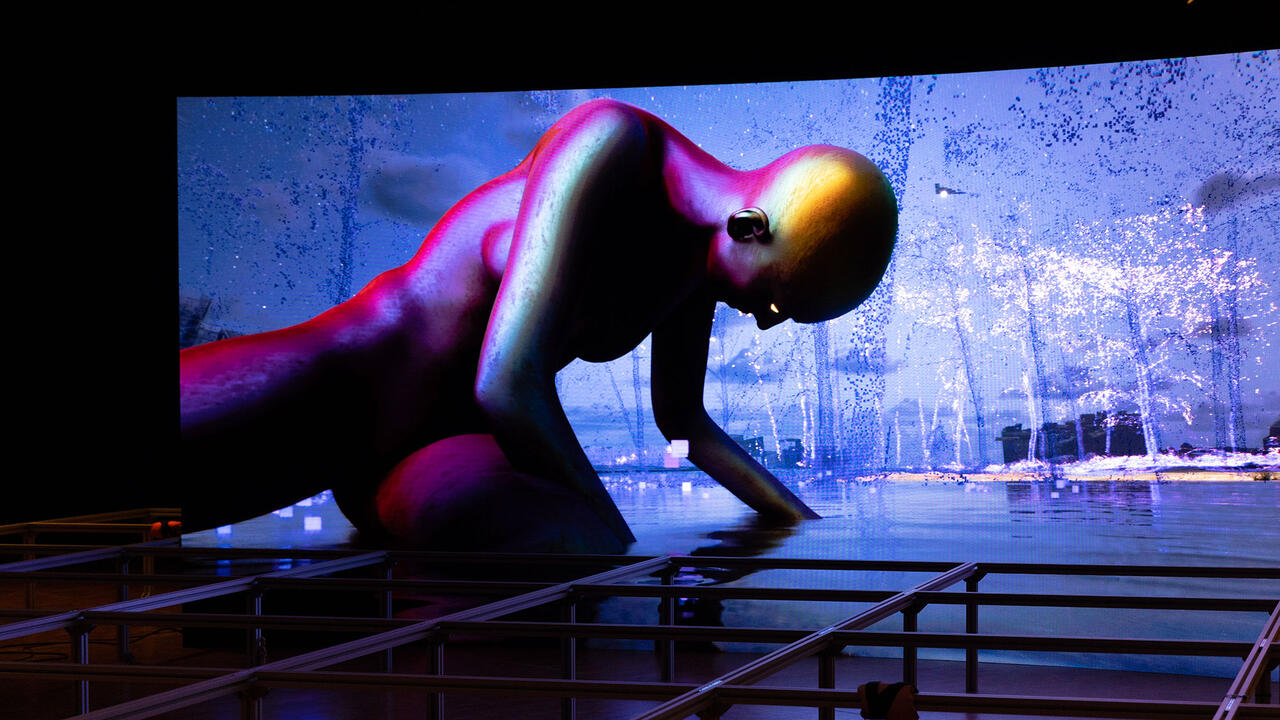Rob Fischer

Although he gleans most of his working materials from the scrap heap, Rob Fischer’s sophisticated grasp of space, texture and colour nimbly avoids any precious piety towards found objects. Instead, he keeps his lyrical tendencies in elegant check with a strong undercurrent of wry, sunless humour.
Fischer is adept at controlling and commandeering a given space – even the unaltered raw concrete ceiling and floors played into his overall scheme of rectangular forms. For example, the viewer was not obliged actually to pass through the archway of Altar (2004–5), a carved-out, up-ended and mirror-faced dumpster positioned at the gallery’s entrance. But even circumvented, the massive form held monolithic sway over the room, its delicately reflective industrial surface repeating the fragmented likenesses of the circumambulating viewer, the passers-by on the sidewalk outside the gallery’s plate-glass window, and the speeding traffic on Tenth Avenue. The effect was dreamily aquatic but not without a degree of menace, the shape of Altar’s threshold subtly suggestive of a guillotine.
Set in a metal tub at the gallery’s centre was Summary (Goodyear Ecology) (2004–5), a continuously irrigated car tyre track, carefully ‘excavated’ along with its unruly grass border from the artist’s own cultivated swamp. The faint loamy odour and burbling stream of water contributed to the unexpectedly resonant and poetic commentary on how we imprint ourselves on the natural world in the most oblivious and innocuous ways. A clear plastic tank below the tub received the rusty oxidized run-off, while water for Summary was transported via a series of slender pipes, connected at right angles, which ran through a wooden enclosure similar to an adult-sized playhouse.
Lit by bare bulbs and traversed – often obstructively – by the water pipes, Chapters (1-4) (2004–5) consisted of narrow whitewashed hallways, stained and blotched walls and floors and cramped spaces all too reminiscent of New York’s stingy living-quarters. At the centre of these interconnected ‘chapters’ (redolent of the grim enclosures of Ed Kienholz and the claustrophobic installations of Bruce Nauman) was Abstract Sculpture (2004–5), a shambolic meeting of steel, glass and wood evocative of countless recent media images of wrecked domestic dwellings. Industrially visceral in effect, the interior of Abstract Sculpture felt like a secret sanctuary, and viewing it like being granted an intimate glimpse of the piece’s scrappy innards.
Providing a sense of relief as you exited Fischer’s ‘chapters’ was Greenhouse No. 4 (Repetitive Cycles) (2004–5), a child-scaled hot-house powered by a tangle of bright orange extension cords and filled with moss and other flora collected from Fischer’s yard. Even under glass and out of reach, the enclosed foliage was a welcome counterpoint to the confining spaces of his other sculptures.
On the walls Fischer mounted ‘Highway 71 No. 1–3’ (2004–5), a series of colour photos shot from his car window (which serves as a frame within a frame) of bedraggled Midwestern roadside trailer homes, over which he later painted fake orange flames and grey and black smoke billowing from doorframes and air vents in acts of painterly vandalism. Another series of mobile home shots, ‘Unity Road No. 1–5’ (2004–5), was slightly more bucolic, but the photographs’ pastoral elegance was made equally disturbing by the overlay of a pyromaniac’s fantasy of backwoods immolation. Like Fischer’s own recycling process, the trailer long ago underwent a entropic shift in the American vernacular from the suburban home on wheels – ‘everything to make you happy and contented, no matter where you choose to be’ in the words of an early advert – to a commonplace wayside eyesore; rural slums on wheels that never go anywhere.
Each part of Fischer’s installation worked separately and in concert with others, the whole simultaneously muscular and fragile. At a time when easy literalness seems the order of the day Fischer is refreshingly suggestive, the work oneiric yet unmystical. ‘Ballad of Easy Rider 1–4’ (2004–5), a series of slightly too wistful versions of the explosive final scene of the classic 1969 film of the title, again elaborated on themes developed elsewhere in the exhibition: Americans’ axial and contradictory yearnings for the seductions of mobility and the rootedness of home.














